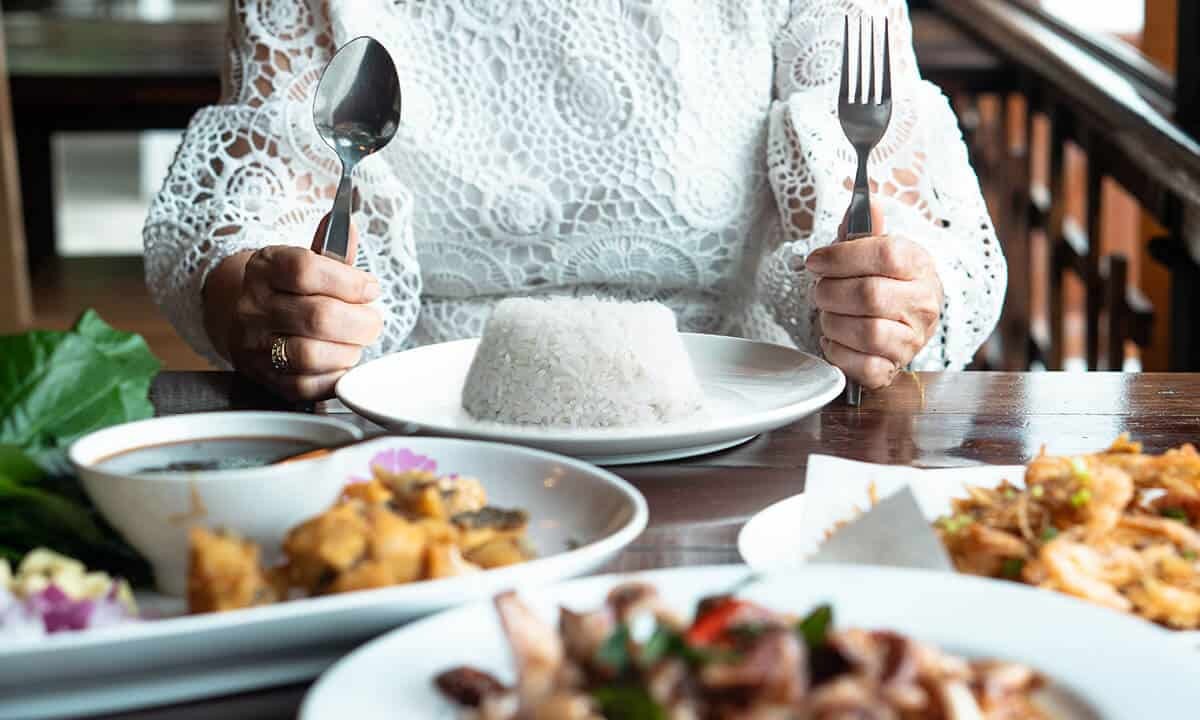
The Way We Eat
By Idge Mendiola
March 28, 2022
“Food to the Filipino is history. It is also bond, culture, and identity.” — Doreen Fernandez
Our meals always start with rice. For the ancient Ifugaos and the unabashed millennials, rice is life, so much so that it takes major space on the plate. The usual allotment is a cup per person, but it is never enough.
Isang bandehado (one huge platter) is more like it—unli-rice in the current vernacular. Rice serves as the neutral canvas to a rich and flavorful ulam (viand), typically made of pork or chicken. Beef and seafood are served on special occasions. It is not complete without vegetables, fresh or simply blanched. Of course, the meal always comes with sawsawan (dipping sauce) on the side.
Hands on
“Food to the Filipino is history. It is also bond, culture, and identity.”
A spoon and a fork rest on each side of the plate, while the knife stays in the kitchen. The spoon is used in multiple ways. It takes the sawsawan from a saucer to the plate. It cuts up meat and separates it from the bones. The spoon also marries the ulam and the rice, producing what is deemed the perfect spoonful. If there’s anything to be stabbed or pricked, like a morsel of grilled pork or a piece of roasted carrot, a finger is used to push the item onto the spoon, leaving the fork to a mere supporting role.
At times, the hand takes the place of the utensils, and not merely for picking or peeling. Kamayan (with bare hands) is a traditional form of eating, usually employed at boodle fights. Taken from a military practice, this requires placing food in a pile atop banana leaves. Partakers dig in using their hands, taking a scoop of rice and ulam, then pushing it into the mouth.
It is not exactly offensive, but many Filipinos are too humble to take pleasure in the last piece of food on the table. As an extension of their hospitality and out of shyness and courtesy too, they feel obligated to ask if anybody else is hungry before being rid of guilt and grabbing the last bite.
Finding reasons to eat
Almost every occasion, be it a milestone or a last-minute get-together, revolves around food. Baptisms and graduations are punctuated with a celebratory meal. Job promotions call for a free treat. Provincial fiestas require the best in show.
Heirloom dishes, enough to crowd the table, are prepared in advance and in abundance. A whole pig or calf is slaughtered and aged wines are unveiled. Doors are open to everyone. There is much singing and dancing, but always in between bites.
Even on a normal, uneventful day, Filipinos find reasons to eat. The regular breakfast, lunch, and dinner are peppered with snacks in between. So, at any time, there is a big chance that you might be interrupting a meal.
Our welcome greeting
“Tara, kain tayo! (Come, let’s eat!)” is heard from every dining room, as if to express warmth and fondness even to a stranger. There is always an extra serving of rice and ulam, a seat and a table setting reserved for surprise guests.
“Tara, kain tayo! (Come, let’s eat!)”
Mealtimes in the Philippines are almost always social affairs. Food is more than physical nourishment. Everyone is family, from blood relatives to neighbours and workmates, and all members are welcome to partake of the feast.
There is a show of bounty that is never in excess. And if there is any, the Filipinos’ ingenuity comes into play. Leftovers become tomorrow’s treasures: rice becomes sinangag, lechon becomes paksiw, all divided among neighbors, packed to share with officemates, or offered to a new guest.
Filipino cuisine is always best served family-style because it is more pleasurable when shared. This is the way Filipinos eat, and you are most welcome.


